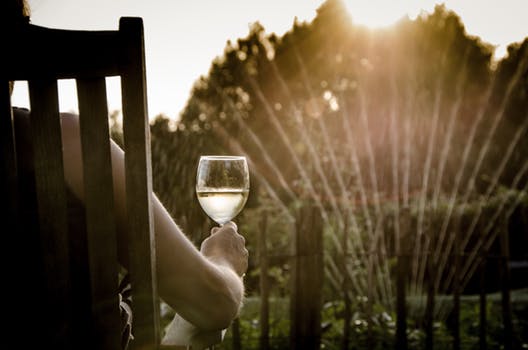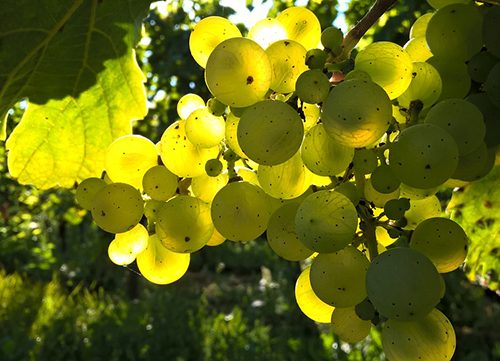美國加州葡萄酒產區_中北部山谷Yolo縣Introducing the North Central Coast, CA

舊金山附近的葡萄酒產區
北海岸地區:索諾瑪,納帕,索拉諾,馬林
灣區:康特拉科斯塔,聖馬特奧
中央山谷:阿拉米達(利弗莫爾),鄧尼根山,約洛縣,聖克拉拉
中央山谷面積廣闊,與加利福尼亞太平洋海岸線平行,行程超過400英里(650公里), 它位於內陸約100英里(160公里)的地方,吞沒了該州北部的三分之二,其邊界延伸至西部的沿海山脈和東部的內華達山脈。

從技術上講,中央山谷實際上是兩個山谷:北部的薩克拉門託山谷和南部的聖華金河谷,它們匯集在廣闊且水文複雜的薩克拉門托 – 聖華金河三角洲,這可能被視為舊金山海灣的自然延伸,並帶來了內陸50英里(80公里)的鹽和淡水的交匯點,所有這些水的存在不僅有助於降低溫度,而且還提供了所有重要的灌溉。
中央山谷是加州農業產量的重要組成部分,它向美國和世界的幾乎每個地方提供各種食品,從西紅柿和蘆筍到杏仁和杏,葡萄藤不可避免地進入了這個高產區,擁有出色的土壤和灌溉系統,中部山谷本身沒有產區,但山谷是許多鮮為人知的AVA(美國葡萄種植區)的所在地,其中最著名的是位於薩克拉門托南部的洛迪。
中央山谷是加州葡萄酒產業的主力軍,生產了該州一半以上的葡萄,這裡盛行的炎熱乾燥條件有利於高產,大部分收穫進入散裝葡萄酒市場,然而在選定的次區域,也正在生產越來越多的優質葡萄酒,具有較高天然酸度的葡萄,如Chenin Blanc、Colombard、Barbera、Chardonnay是表現最佳的葡萄。
Yolo County Wine
悠若Yolo縣是加利福尼亞州中央山谷和舊金山東北部最北端的葡萄酒產區,該縣是一個重要的農業產業的所在地,葡萄栽培只是其中的一小部分,這是番茄的主要國家,也就是說該縣擁有四個AVA以及加利福尼亞大學戴維斯分校最著名的葡萄酒(葡萄酒相關)學院。 Chardonnay、Chenin Blanc、Petite Syrah是該地區最重要的葡萄酒,然而,優質的赤霞珠,歌海娜以及較少量的Petit Verdot,Petit Sirah,Tempranillo也在Yolo縣取得了成功。
Yolo County位於著名的加州葡萄酒區中心,納帕縣位於西部的Vaca山上,湖縣位於Yolo縣的西北部,索拉諾縣與Yolo共享其北部邊界,Lodi AVA位於東南部。
這裡的四個子AVA遍布全縣, Capay Valley和Dunnigan Hills AVA位於西北角,Clarksburg和Merritt Island位於薩克拉門托河邊緣,形成該縣的東部邊界。
在這條河上,海洋影響蔓延,Yolo縣比中央山谷內的大多數其他AVA稍微涼爽。在克拉克斯堡(Clarksburg)和梅里特島(Merritt Island)尤其如此,霧和沿海風使葡萄園日常降溫,延長了生長季節,然而這裡肥沃排水不良的土壤更有利於高產,而不是高品質,使這兩種AVA非常適合大量生產涼爽氣候的葡萄酒。
西部的Dunnigan Hills和Capay Valley更適合生產優質葡萄酒,較高的海拔意味著更明顯的晝夜溫度變化,仔細的選址可以優化任何給定葡萄園的陽光和風暴,Dunnigan Hills乾燥,肥沃的土壤提供了良好的排水性,導致葡萄產量較低,具有極佳的風味濃度。
Yolo縣(以前稱為“Fremont”郡)是加利福尼亞州最初的18個縣之一,它成立於1850年。與加利福尼亞州的大部分地區一樣,葡萄酒釀造在1850年代加州淘金熱期間來到該地區。人們一致認為“Yolo”是美洲原住民,意為“豐富的草原”。流行文化為該縣樂於採用的詞語提供了另一種選擇:
“YOLO”是“You Only Live Once”的首字母縮寫。

California – North Central Valley Wine Region; Yolo County
Wine Regions near San Francisco
North Coast Region: Sonoma, Napa, Solano, Marin
Bay Area: Contra Costa, San Mateo
Central Valley: Alameda (Livermore), Dunnigan Hills, Yolo County, Santa Clara
The Central Valley is a vast area, running parallel to California’s Pacific coastline for more than 400 miles (650km). Located about 100 miles (160km) inland, it swallows up the northern two-thirds of the state, with its boundaries extending to the Coastal Ranges in the west and the Sierra Nevada mountains in the east.
Technically speaking, the Central Valley it is in fact two valleys: the Sacramento Valley in the north and the San Joaquin Valley in the south. They converge at the extensive and hydrologically complex Sacramento–San Joaquin River Delta. This might be viewed as a natural extension of the San Francisco bays, and brings the meeting point of the salt and fresh water some 50 miles (80km) inland. The presence of all this water not only contributes to lowering temperatures, but also provides all-important irrigation.
The Central Valley is a key component to California’s agricultural output. It supplies all types of foodstuffs to almost every part of the United States and the World, from tomatoes and asparagus to almonds and apricots. Inevitably, the grapevine has found its way into this highly productive area, which has excellent soil and irrigation systems. There is no Central Valley appellation per se, but the valley is home to a number of lesser-known AVAs (American Viticultural Areas), the most notable of which is Lodi, just south of Sacramento.
The Central Valley is the workhorse of California’s wine industry, producing more than half of the state’s grapes. The hot, dry conditions which prevail here are conducive to high yields, with the majority of the harvest going into the bulk wine market. However, in selected sub-regions, increasing quantities of high-quality wines are also being produced. Grapes with higher natural acidity, such as Chenin Blanc, Colombard, Barbera and Chardonnay, are among the best performers.
Yolo County Wine
Yolo County is the northernmost wine region within California’s vast Central Valley and northeast of San Francisco. The county is home to a significant agricultural industry of which viticulture is only a small part; this is prime tomato country. That said, the county boasts four(4) sub-AVAs as well as the most famous oenological (wine-related) college in California, at the University of California, Davis. Chardonnay, Chenin Blanc and Petite Syrah are the most important wines produced in the region. However, excellent Cabernet Sauvignon, Grenache, and lesser production quantities of Petit Verdot, Petit Sirah, Tempranillo are also successful in Yolo County.
Yolo County is in the middle of a cluster of famous Californian wine zones. Napa County is just over the Vaca mountains to the west and Lake County is to the northwest of Yolo County. Solano County shares its northern border with Yolo, and the Lodi AVA is in the southeast.
The four sub-AVAs here are spread out across the county. The Capay Valley and Dunnigan Hills AVAs are in the north-western corner, while Clarksburg and Merritt Island are along the edge of the Sacramento River, which forms the eastern border of the county.
It is up this river that marine influences creep, and Yolo County is slightly cooler than most of the other AVAs within the Central Valley. This is particularly true in Clarksburg and Merritt Island, where fog and coastal winds cool the vineyards daily, extending the growing season. However, the fertile, poorly drained soils here are more conducive to high yields than high quality, making these two AVAs excellent for the bulk production of cool-climate-style wines.
Dunnigan Hills and Capay Valley in the west are better suited to producing quality wines. Higher altitude means a more-pronounced diurnal temperature variation, and careful site selection optimizes sunlight and wind exposure for any given vineyard. The dry, loamy soils of Dunnigan Hills offer excellent drainage, leading to lower yields of grapes with an excellent concentration of flavor.
Yolo County (previously named “Fremont” County) was one of California’s original 18 counties, and it was formed in 1850. As in much of California, winemaking came to the region during the California Gold Rush of the 1850s. There is a consensus that “Yolo” is Native American in origin, meaning “abundant grasslands”. Popular culture has offered up an alternative meaning for the word that has been happily adopted by the county:
“YOLO” is an acronym for ‘You Only Live Once.’



